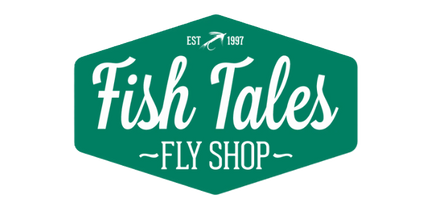Indications for Indicators
Apr 23, 2018
Style:
Corkie:
Pros
- simple and relatively inexpensive
- has been used for decades
- can hold up a reasonable amount of weight
- good for lakes and rivers.
Cons
- need a toothpick or something similar
- limited color options
- can land loudly
Slotted Tipper Style:
Pros:
- simple twist of the rubber tube to attach to leader
- availabile in a variety of sizes
- can use the subtle movement of the black tube to help with strike detection
- primarily used on rivers
Cons:
- higher cost
- rubber tube needs replacement
- can be hard to untwist to remove from leader
- hard to change position on leader for depth adjustment
Yarn with loop:
Pros:
- can easily adjust “size of indicator with scissors to suit conditions
- soft landing for more delicate presentation
- can dry shake or “gink” to help with floating
- simply loop onto leader
- can be easier to cast
Cons:
- doesn’t hold up very much weight
- can slip on leader depending on how thick leader is
- can be pulled under more easily by swirling currents
ThingaMaBob: These were the first “air filled” indicator and when they originally came out they were a “game changer” for many people.
Pros:
- they are light and easier to cast
- come in a variety of colors and sizes
- holds up a weight well
- easy to loop on leader
Cons:
- can slip on leader depending on diameter of leader material
- fill with water if they get a hole in them
- hard to adjust for depth changes
- kinks your leader
AirLock:
Now our most popular “air filled” indicator
Pros:
- come in a variety of sizes and colors
- holds up weight well
- easy to put on line
- easy to adjust for depth changes
- doesn’t kink your leader
Cons:
- more expensive
- can lose the screw-on “cap”
- fill with water if damaged
Rowley’s Quick Release:
Pros:
- primarily used on lakes
- acts like a “slip bobber” in that it can release out of the way to land fish more easily without the indicator being in the way
- can easily adjust for depth
- can easily adjust “release” tension
- comes in a variety of sizes and shapes, holds up weight well
Cons:
- Can lose black insert
- if butt section of leader is thick may not slide through black insert smoothly
- more expensive
Pros
- a unique indicator option that allows you to choose the amount of yarn you use
- easy to adjust for depth
- very soft landing for subtle presentations,
Cons
- doesn’t hold much weight
- can be a bit fussy to learn the “install” procedure
- can run out of tubing that makes system work
Palsa:
Pros
- extremely easy to attach to leader
- very subtle presentation
- easy to cast
- keeps leader straight
Cons
- leaves sticky residue on leader
- doesn’t hold up much weight
- one time use
Foamy Dry Fly (hopper-dropper rig):
Pros
- Easy to rig the two flies together when tying straight off the hook bend or eye
- allows you to fish a surface & subsurface fly at the same time
- one of the most used “indicator” systems where it is legal
Cons
- Not for heavy nymphs
- not legal everywhere
- for “shallow” nymphing
There is lots of debate about the use of strike indicators in fly fishing, but the reality is they’ve become an important piece of equipment in your fly fishing arsenal. No singly style of indicator will work in the many fly fishing situations you will encounter but once you figure out which works best for you get good at it. And get out there and put your skills to use.


